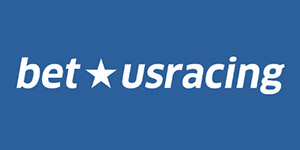NFL Betting Odds
-

 Claim
Claim
$1000
Match Bonus9.718+ New customers only. 100% match bonus up to $1000. Min deposit $50. 10x rollover requirement. Promocode: MYB100 -

 Claim
Claim
$250
Match Bonus9.4Join Bovada, make your first deposit and instantly receive a 50% Sports Welcome Bonus up to $250. -

 Claim
Claim
$500
Match Bonus9.3Get a 100% Bonus, up to $500, to wager in the Xbet Sportsbook when you sign up and fund your new account with minimum of $45. Be sure to use promocode XB100 to claim this offer on your first deposit. 7x rollover requirement prior withdrawal. -

 Claim
Claim
$200
Match Bonus9.2The bonus and the deposit need to be rolled over 4x at min. odds of -200 (1.5) before a payout is possible Max. $200 of every bet count towards the rollover. -

 Claim
Claim
$150
Match Bonus9.1Get a 150% Bonus, up to $150, to wager in the BetUSR Sportsbook. Deposit minimum $100 and wager at least $500 within 30 days of registerening your account and you will automatically qualify for $150 CASH BONUS with just 1x wagering requirement.
However, this can actually be far more helpful to you, because the information is not exclusive and everyone has access to it. This gives bettors the chance to make their own odds, calculate both the implied and the real probability of a certain event occurring.
How do Odds Work?
To calculate odds, a bookmaker must take into account the probability of a certain event happening. This can concern larger items such as an entire game or league, or it can come down to one very specific event that bettors can wager on. Once they have determined the probability of the event, they set the odds. The odds indicate what the payout for a bet will be, not the true chance of it happening. The odds are usually against you, and if you bet smart, you will make small profits that can grow over time rather than relying on one big hit.
If the odds represented the true probability of an event, bookies would not make any profit in most cases. The odds need to be set up in a way that allows both players and the bookmakers to get something out of it. That is why you will probably never find even odds. If the odds were -100 for A and +100 for B and bettors placed the same amount, for instance $30,000 on A and $30,000 on B, regardless of the result, one group would receive the full payout and nothing would be left for the house.
So, betting odds and probability are two different things. This does not mean you should dismiss them and avoid taking them into account every time you bet; on the contrary, they matter quite a lot, and we will get into that a little later.
Different Odds Formats
In any case, if you wish to start betting on the NFL seriously, you will need to learn about every aspect of sports betting. To bet successfully on any sport, you need a disciplined and intelligent approach. This includes understanding the different types of odds.
Along with explaining how they function, we will help you learn how to convert any format into the others. This way, you will be able to convert all odds into the format you find easiest to understand. This is especially useful when you compare the odds that different sportsbooks offer, because they will not all present odds in the same format.
Moneyline
There are formulas that can help you calculate your potential win more quickly. For positive Moneyline odds, use the following formula: Initial Bet x (Odds/100) = Potential Profit. For negative Moneyline odds, use this one instead: Initial Bet / (Odds/100) = Potential Profit.
You can also convert Moneyline odds into Decimal or Fractional ones. You can do this either by using an online converter or by learning the formulas yourself. For instance, you can convert positive Moneyline odds into Decimal odds with this formula: (Moneyline Odds + 100) / 100. For negative odds, use this: (Negative Odds + 100) / Negative Odds. For this calculation, ignore the negative sign.
You can convert Moneyline odds to Fractional odds very simply. For positive Moneyline odds, place them over 100 and simplify the fraction if possible. For example, odds of +300 translate to Fractional odds of 3/1. For negative Moneyline odds, invert the equation, so odds of -300 become 1/3.
Decimal
You can convert Decimal odds into the Moneyline or the Fractional format by using formulas. Because Moneyline odds can be positive or negative, there are two formulas for converting Decimal odds into them. The first applies to Decimal odds equal to or below 2.00 and results in negative Moneyline odds: 100 / (Decimal Odds – 1). The second applies to Decimal odds above 2.00 and produces positive American odds: (Decimal Odds – 1) x 100.
To convert Decimal odds to Fractional odds, use this equation: (Decimal Odds – 1) x 100, then place the result over 100. After you simplify the fraction, you will have the corresponding Fractional odds.
Fractional
First of all, Fractional odds are exactly what the name suggests: fractions. They can be expressed in all sorts of fractions ranging from simple ones like 2/1 to more complex ones like 10/11. There is a simple way to calculate your potential returns with Fractional odds, so do not despair and go looking for your old math textbooks just yet. Here is the simple formula: Bet x (Fractional Odds) = Potential Profit.
If you would rather convert these traditional odds into the American format, there is a simple way to do that as well. Naturally, you will need two separate equations because these odds can be either positive or negative. When the odds are odds against, in other words higher than evens, use the following formula to transform them into positive Moneyline odds: (Fractional Odds) x 100. Then simply add the + sign.
When it comes to odds on, or Fractional odds that are lower than evens, you can convert them into negative Moneyline odds with this formula: 100 / (Fractional Odds). Then, once again, simply add the – sign.
If you prefer Decimal odds, you can convert Fractional ones into them with this formula: (Fractional Odds) + 1. It is quite simple and easy to use, and, most importantly, it certainly comes in handy.
Understanding the Importance of Odds
Basically, the odds show you how much money you could win from a given bet. If the odds are even, you know that you will be doubling your stake, provided that you win. If the odds are ‘on’ for a given bet, there is a higher chance of winning, but that in turn means the profits will be lower than if the odds were even.
If you have odds ‘against’, you are placing a risky bet that could, however, yield a payout that more than doubles your stake. So, for instance, if you decide to place a bet that an underdog will win in a game with a team that has proven itself superior, you would be placing a bet with odds against.
The question remains, though: how exactly does one find value in a bet? This is where probability comes into play.
Odds and Probability
Of course, sometimes the odds presented in sportsbooks do accurately reflect the situation at hand, but more often than not, you will need to calculate the probability for yourself. For example, if you have been following a team’s development very closely, you might see that, despite being the underdog in a given bet, it is in fact more likely to win than the favorite. This way, you have gained the upper hand. Therefore, knowledge of the game is essential.
Implied Probability
Implied probability is not exactly either of the two, but it bridges the gap between them. The implied probability of odds can be calculated quite easily. Basically, if you take the odds in their decimal format and apply them to this simple equation: 1 / Decimal Odds, you will get the implied probability. In order to make it easier to understand, you may wish to multiply the result by 100 so that you get a percentage.
With an exact percentage, you will have a clearer idea of what the implied probability of the odds is. You can then compare it with your personal assessment of the probability of a certain event occurring. Then, by comparing them, you will be able to see if there is any actual value to the bet, in other words, if it is worth placing at all.
The Vig
If the odds are even, the sportsbook will have to pay out approximately the same amount of money regardless of the outcome of the game. This is called a balanced book. Now, in this scenario, the sportsbook earns no profits, so there is no vig, and sometimes sportsbooks go bankrupt because of this. It is in their best interest to adjust the odds in a way that is profitable both to the bettor and to the house. After all, if they do not, they would go out of business.
Naturally, this affects the odds that sportsbooks will offer you. Most sportsbooks still strive for a balanced book overall, but you must remember that they are more likely to strive for a wager distribution that suits their needs. This in no way means that you cannot beat their techniques. By following the tips we have given you, you can make more winning wagers than losing ones and, in turn, make some money while watching your favorite NFL team.